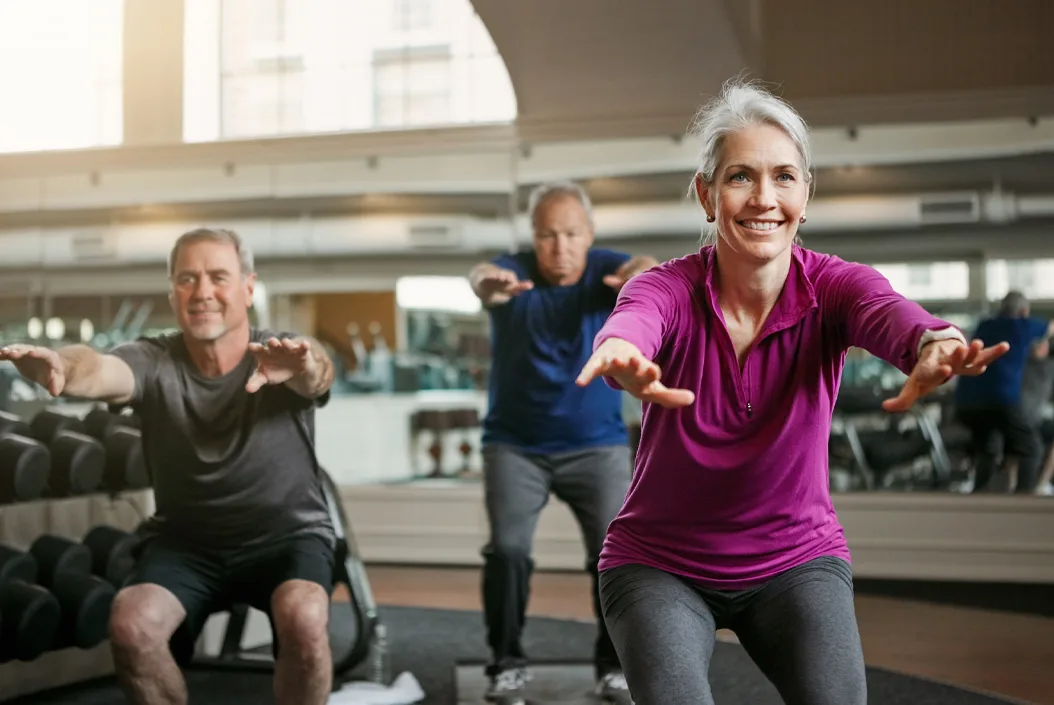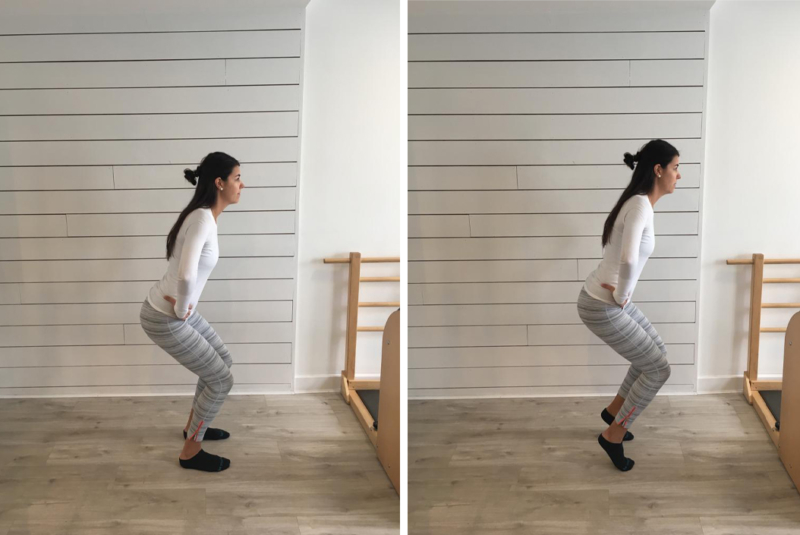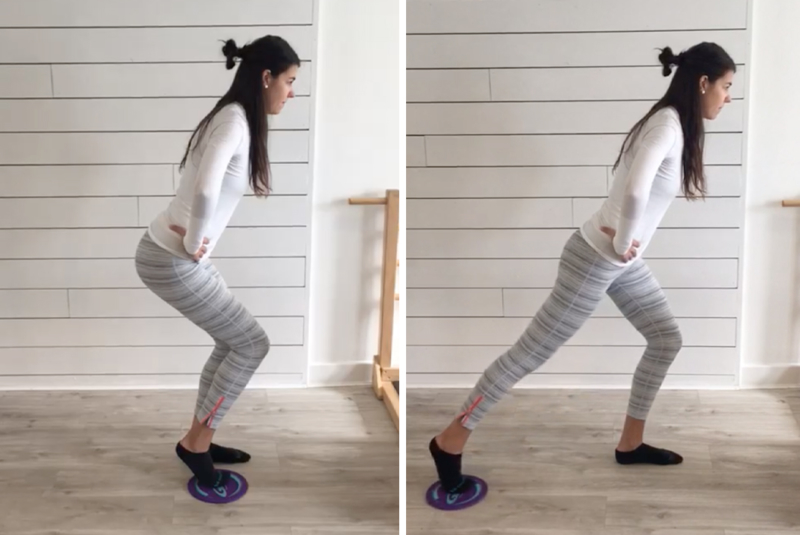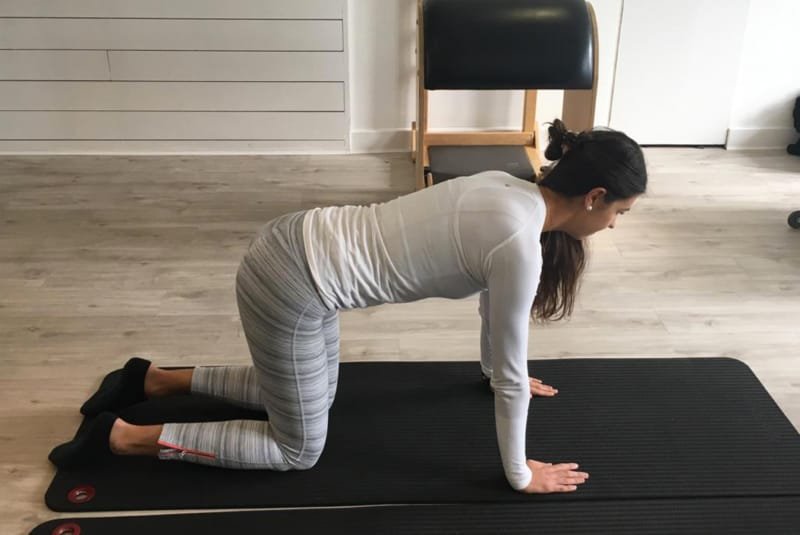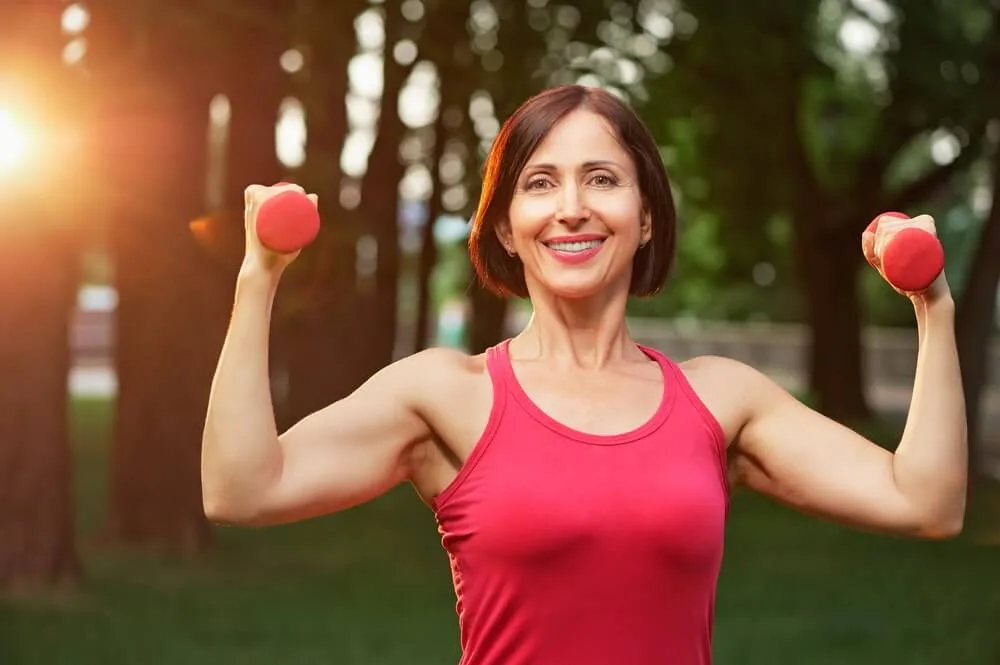The 20th of October sees the advent of World Osteoporosis day. To coincide with it, Complete Pilates have been publishing a series of posts on the subject, including why women need to strength train and look after your bones: world osteoporosis day 2018.
Here, Physiotherapist, Clinical Pilates teacher and our head of business development, Ruth Smith, concludes the series with her top tips on how to exercise safely with Osteoporosis.
Exercise can be a confusing area for people with Osteoporosis or Osteopenia. They may be told that they need to be cautious to prevent fractures and told to avoid certain movements or heavy lifting. At the same time, they are also told that keeping fit is essential for staying healthy. Understandably, these mixed messages can put these groups off exercise.
This is bad news. As a health professional, I know how much a sedentary life can negatively impact people with low bone density. At the same time, I also know how much the right sort of exercise can benefit sufferers. It’s why I’m here – to demystify exercise for those suffering with these conditions and get them moving again with these tips on how to exercise safely with Osteoporosis.
How can exercise help prevent Osteoporosis?
Bones respond to loading. This means that they will adapt to what we are asking them to do. This is vital in people under the age of 30 when our bone density is still increasing.
We tend to get to the peak of our bone density around the age of 30 and it then starts to decline. Before then, the biggest time for change in our bones is during our teenager years when our skeleton is fully developing. This is the time when we can make the most gains in terms of bone density. It is this bone density that we need to build up to prevent fragility and breaks when we are older.
All of this means ‘paying in to the bone bank’ needs to happen from a young age. It’s why the NOS (the National Society of Osteoporosis) are campaigning this year to tell the under 30s about bone health.
For this younger age group, the most important type of exercise is going to be anything that loads your bones. This includes impact exercise such as running, tennis, dancing, football, netball, gymnastics, weights. Basically, anything where you are putting weight bearing load through your bones is a good idea.
These kinds of exercises stimulate the bones to develop and increase in density as they respond to the forces being put through them. They respond best to a variety of loading, so a mixture of sports using upper and lower body is best. Get your teenagers out and exercising as much as possible to look after their bones later in life!
Exercises for bone health later in life
So, what exercise can we do later in life when we are no longer building up our bone bank?
Weight-bearing and loading is still important. Although it won’t increase our density, it can slow the loss of bone density and maintain it for longer. This is in turn will reduce the risk of breaking a bone. So, all the impact exercises mentioned above are still recommended. The only time we stop recommending higher impact exercise is if someone has a high risk of breaking a bone with significantly reduced bone density. We then need to ensure that they are not going to do more damage than good with weighted or high-impact exercise.
Why is exercise important for older people with Osteoporosis?
It’s vital to have strength and balance as we age. These factors are even more important if we have low bone density.
Why? Well, it may seem simple, but if we have strong muscles supporting our skeleton and good balance so that we don’t fall over then we will significantly reduce the risk of breaking a bone.
This is where Pilates can be really useful. Obviously, Pilates is not an impact exercise – but it does give you strength and control of your skeleton and improves your balance. Pilates does not have to be performed lying down. There are many movements which are done in standing to challenge our strength and balance improving our function in daily activities.
The other benefit of Pilates is that we can focus on strengthening your ‘anti-gravity’ muscles down the back of your body. These are the muscles that help to keep you upright and balanced.
We can also work on safely maintaining the mobility, flexibility and good alignment of your spine without putting it at risk. Good posture puts less pressure on the skeleton, which is a good thing for Osteoporosis sufferers. And it also has other benefits; according to research, better posture later in life gives us a better quality of life!
Related reading: Pilates for seniors
Which exercises should be avoided with Osteoporosis?
If you have Osteoporosis there are certain movements which you need to avoid during exercise to reduce the risk to your spine. These are anything that involves forward bending of the spine and particularly forward bending against weight or gravity. Traditional Pilates that has not been adapted for Osteoporosis can include these moves. This means you need to ensure your instructor knows about your diagnosis and is trained in teaching and modifying movements for it.
If you have a diagnosis of Osteoporosis, your main focus should be on working on your strength and balance. You should avoid forwards bending of the spine in exercise (and daily life) to reduce the risk to your vertebrae. It is always advisable to consult with an exercise specialist, like a Physiotherapist or Clinical Pilates Instructor, who specialises in Osteoporosis to get the best individual advice.
4 Pilates exercises to boost bone health
Below are 4 exercises that are ideal for you to do if you have low bone density or Osteoporosis. They will challenge your strength and balance. These exercises are safe, provided you are pain-free and mobile.
You should aim to do these at least three times a week to feel the difference. For balance, it is best to challenge it as much as possible every day. This can be included in your daily routine, for instance, can you stand on one leg whilst you brush your teeth or walk down the corridor as if you were on a balance beam? Every little challenge makes a difference to your body, your balance and your bones!
1. Standing Footwork
This challenges your balance, coordination and strength in your anti-gravity muscles
Start by standing tall. Then, push the hips back into a small squat. From here, lift onto the heels pressing the ball of the foot into the floor. Finally, straighten the knees and then lower the heels. Repeat x 15
2. Scooter
This exercise challenges your balance and strength through the spine and hips.
3. Press ups
This gives you weight bearing through your arms and wrists and strengthens the triceps, this can help to reduce the risk of wrist fractures.
Come into all fours with your hands under the shoulders and the knees under the hips. Lean forward as you bend the elbows along the line of your body so that you feel your upper arms working as your chest lowers and then lifts again. Aim to maintain your spine in the same posture throughout. Repeat x 15
4. Dart
Like this spine extension exercise, this move works the strength down the back of your body to keep your spine upright, protect the spinal bones and help with balance.
Start by lying on your front. If it’s comfortable, rest your forehead on a small folded towel. Arms are by your side.
Now, imagine that your body is being stretched as tall as possible from the crown of your head down to your tailbone. Roll the shoulders back to open up the collar bones and hover the hands. Next, allow the head and chest up to come off the floor – this will work the upper back. Remember: you shouldn’t feel any pain or strain in the lower back. Slowly lower back down and repeat x 10
If you have been told you have osteoporosis or osteopenia and want to see how Pilates can help you try booking an appointment today.
Education is key:
These blogs are designed to give information to everyone, however, it is important to remember that everyone is different! If you have not seen one of our therapists and have any questions about injuries, what you have read or whether this may be useful to you, please just ask. We are more than happy to help anyone and point you in the right direction. Our biggest belief is that education is key. The more you understand about your injury, illness and movement, the more you are likely to improve.


